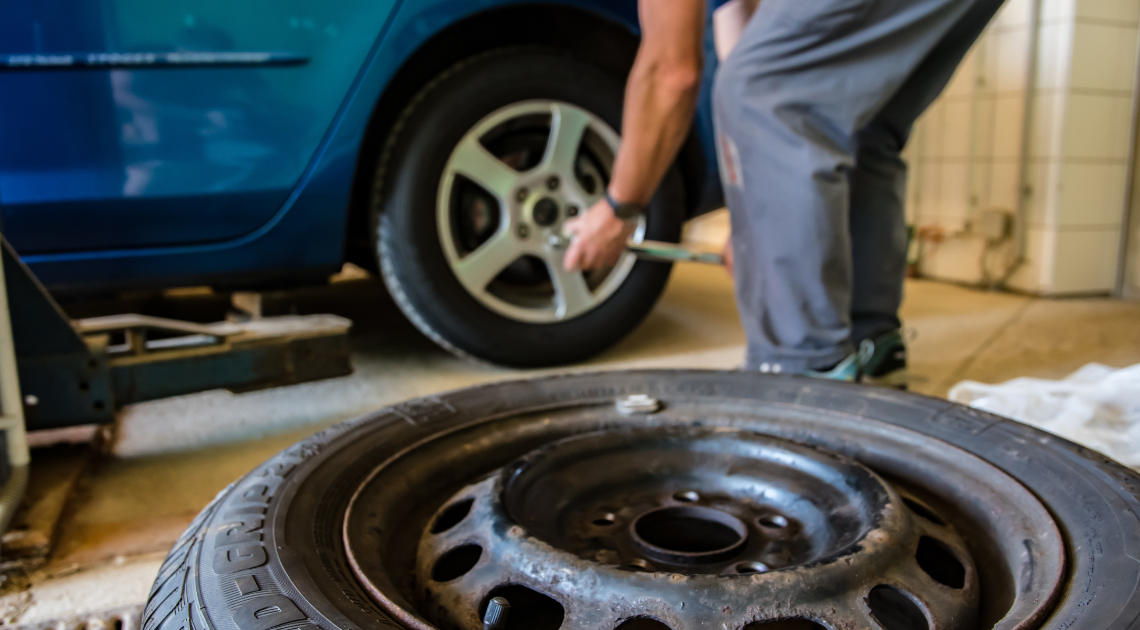
Winter Tyres: When to Make the Switch and Why
As the crisp autumn air gives way to winter's chill, motorists across Harrogate and the broader UK face a crucial decision: when to switch to winter tyres. At Carlingo, we understand that this choice can significantly impact your safety and driving experience during the colder months. Let's delve into the whys and whens of making the switch to winter tyres.
Understanding Winter Tyres
Before we discuss timing, it's essential to understand what sets winter tyres apart. Unlike standard tyres, winter tyres are specifically designed to perform in cold temperatures, snow, and ice. They're made from a softer rubber compound that remains flexible in freezing conditions, providing better grip and handling.
The tread pattern on winter tyres is also distinct, featuring deeper grooves and tiny slits called sipes. These design elements help to channel away snow and slush while providing additional biting edges for improved traction on icy surfaces.
When to Make the Switch
In the UK, there's no legal requirement to use winter tyres. However, many experts recommend switching when temperatures consistently drop below 7°C (44°F). This temperature is crucial because it's the point at which the rubber compound in standard tyres begins to harden, reducing grip and performance.
For Harrogate and much of the UK, this temperature threshold is typically reached in late October or early November. However, it's important to keep an eye on local weather forecasts and patterns. Climate change has led to more unpredictable weather in recent years, so flexibility in timing your switch is key.

The Benefits of Winter Tyres
- Improved Safety: The most compelling reason to switch to winter tyres is the significant safety improvement. Winter tyres can reduce braking distances by up to 11% on wet roads and by up to 50% on snow-covered roads compared to standard tyres.
- Better Handling: The softer compound and specialised tread pattern of winter tyres provide better handling in cold conditions. This means improved cornering ability and reduced risk of skidding.
- Increased Confidence: Knowing your vehicle is equipped to handle winter conditions can provide peace of mind and reduce stress during winter driving.
- Potentially Lower Insurance Premiums: Some insurance companies offer reduced premiums for drivers who use winter tyres, recognising their contribution to safer winter driving.
- Extended Tyre Life: By using winter tyres during colder months, you're extending the life of your summer tyres, which can be stored away during this period.
Common Misconceptions
Many drivers in the UK believe that winter tyres are only necessary for heavy snow. However, winter tyres provide benefits in a range of cold weather conditions, including wet and icy roads. Even if Harrogate doesn't see frequent heavy snowfall, the improved performance in cold, wet conditions makes winter tyres a worthy consideration.
Another misconception is that four-wheel drive negates the need for winter tyres. While four-wheel drive does improve traction when accelerating, it doesn't help with braking or cornering, which is where winter tyres truly excel.
The Cost Factor
Initial cost is often a concern when considering winter tyres. However, it's important to view this as an investment in safety and long-term savings. By alternating between summer and winter tyres, you're extending the life of both sets. Moreover, the potential reduction in accident risk and insurance premiums can offset the initial outlay over time.
Storage Considerations
One practical aspect to consider is storage. When not in use, your off-season tyres will need to be stored in a cool, dry place. If you lack suitable storage space at home, many tyre retailers, including Carlingo Car Supermarket, offer tyre hotel services where your off-season tyres can be stored professionally.
The All-Season Alternative
For those who are hesitant about the switch, all-season tyres present a compromise. These tyres are designed to provide adequate performance year-round. However, while they offer better winter performance than summer tyres, they don't match the cold-weather capabilities of dedicated winter tyres.
Making the Switch: A Step-by-Step Guide
- Monitor the Temperature: Keep an eye on daily temperatures. When they consistently drop below 7°C, it's time to consider the switch.
- Check Your Tyres: Inspect your current tyres for wear. If they're due for replacement anyway, switching to winter tyres becomes an even more appealing option.
- Consider Your Driving Habits: If you frequently drive early in the morning or late at night when temperatures are at their lowest, winter tyres might be particularly beneficial.
- Consult with Experts: The team at Carlingo Car Supermarket can provide personalised advice based on your vehicle and driving needs.
- Plan Ahead: Don't wait until the first snowfall to make the switch. Tyre services can get busy as winter approaches, so planning ahead ensures you're prepared before the cold weather hits.
- Switch All Four Tyres: For balanced handling and safety, always switch all four tyres, not just the drive wheels.
While the decision to switch to winter tyres is a personal one, the benefits in terms of safety and performance are clear. In Harrogate's variable winter weather, having the right tyres can make all the difference in maintaining control and confidence on the road.
At Carlingo, we're committed to helping our customers make informed decisions about their vehicles. Whether you're considering winter tyres or exploring other options for safe winter driving, our team is here to provide expert advice and top-quality products.
Remember, when it comes to winter driving, preparation is key. By thinking ahead and equipping your vehicle appropriately, you can enjoy safer, more comfortable journeys throughout the winter months.
